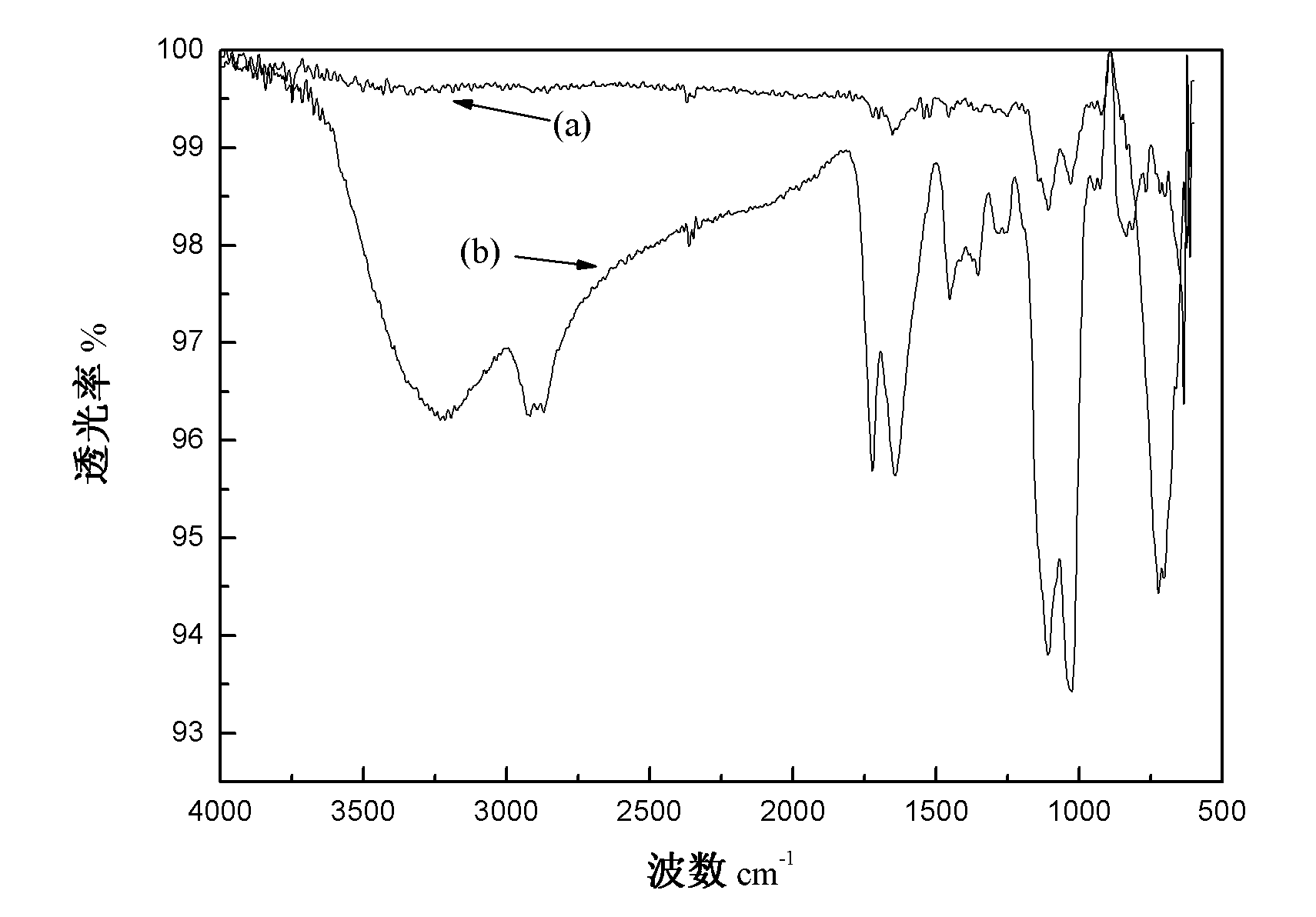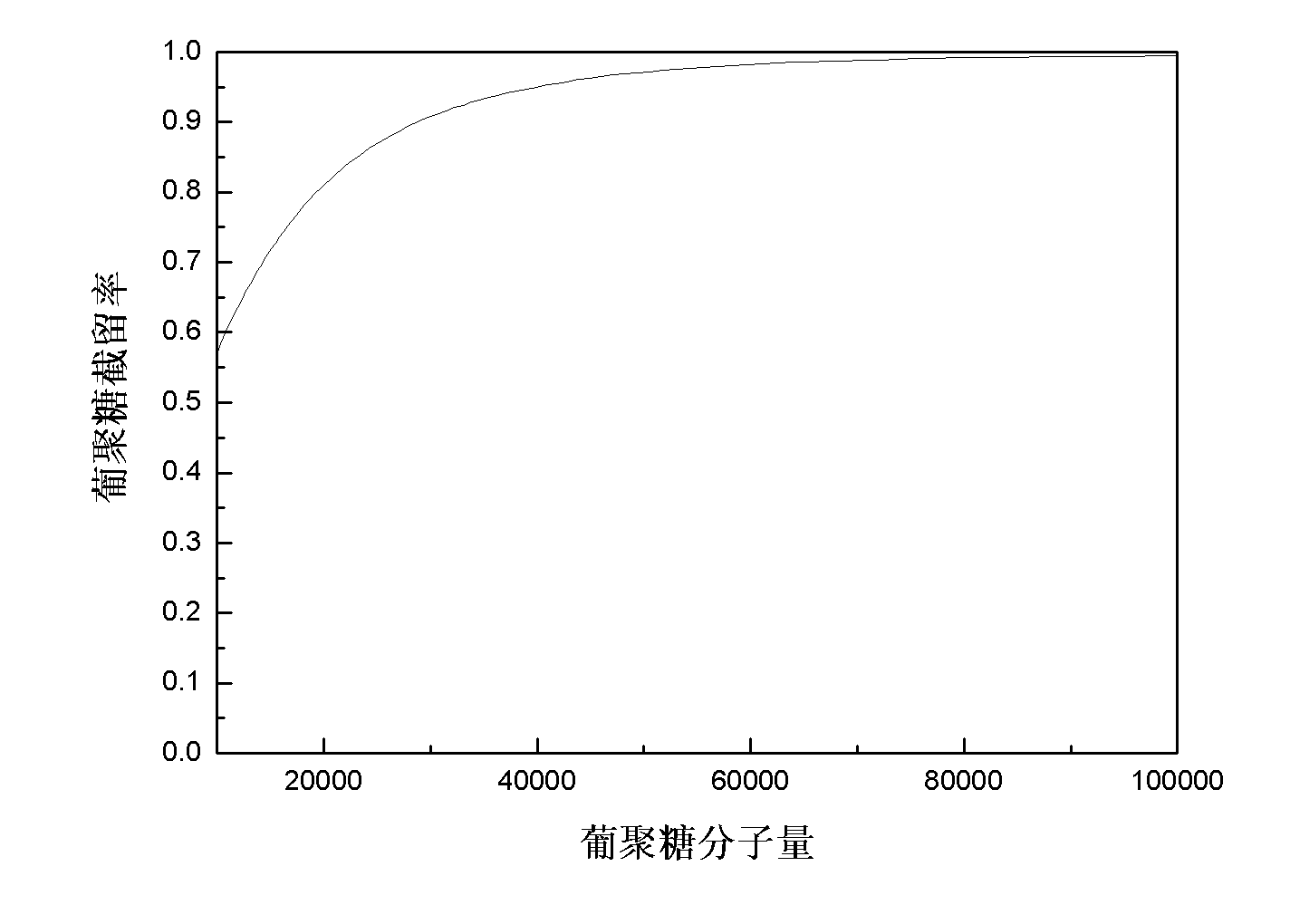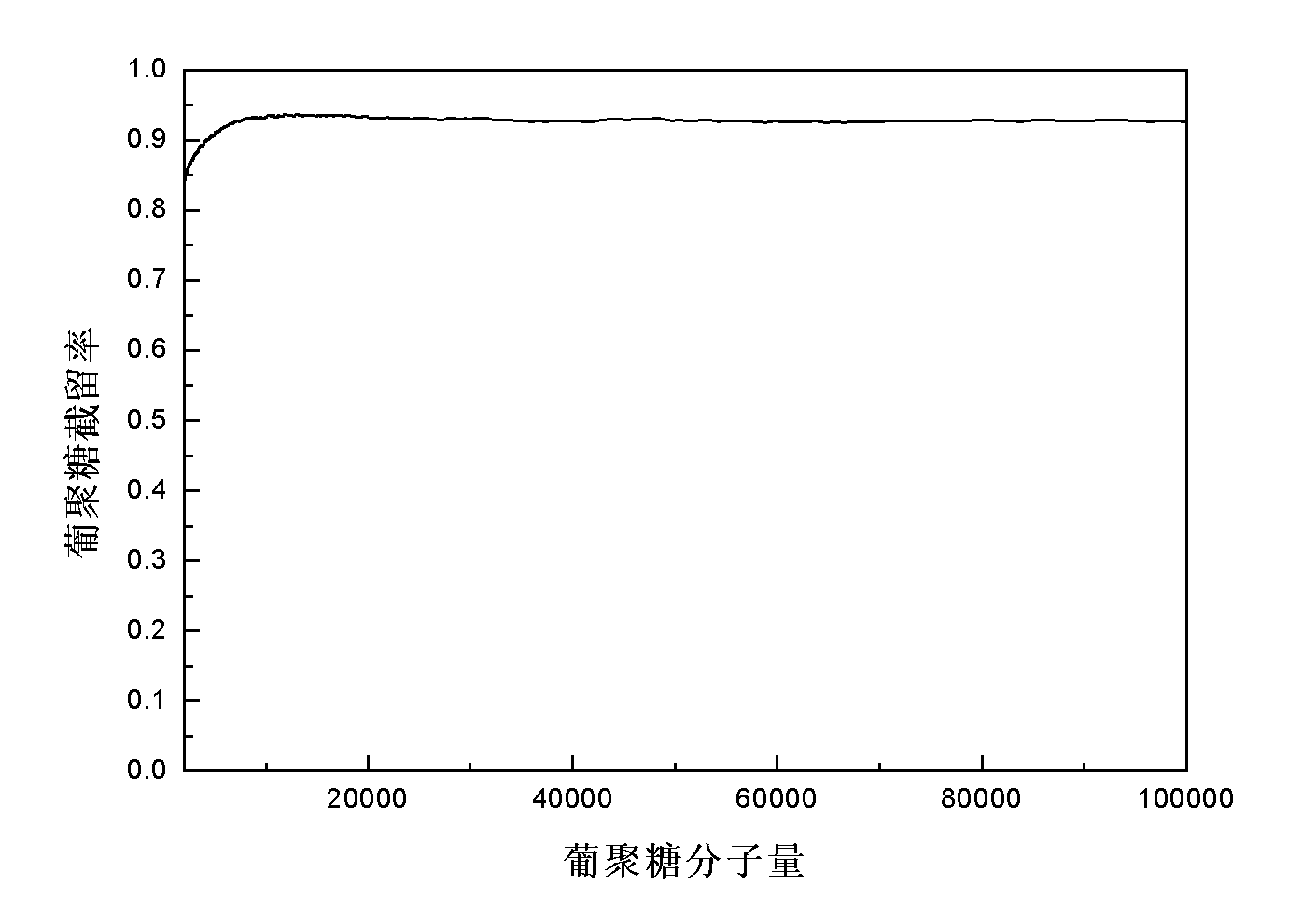Method for preparing protein adsorption-resistant ceramic composite film
A ceramic composite membrane, anti-protein adsorption technology, applied in chemical instruments and methods, membrane technology, semi-permeable membrane separation, etc., to improve the efficiency and life of use, inhibit adsorption, and prolong the membrane cleaning cycle
- Summary
- Abstract
- Description
- Claims
- Application Information
AI Technical Summary
Problems solved by technology
Method used
Image
Examples
Embodiment 1
[0032] Example 1: Preparation of anti-protein adsorption ceramic membrane by grafting onto the surface, the mechanism diagram is shown in Figure 6
[0033] (1) Cool the mixed solution of 3.5ml of 3-aminopropyltriethoxysilane, 3.35ml of triethylamine and 30ml of dichloromethane to 0°C in an ice bath under the protection of nitrogen, and then slowly add 3ml of 2-bromopropionyl bromide to it solution and 15ml of dichloromethane mixed solution, reacted for 6h, and dried under vacuum at 45°C.
[0034] (2) 9.5gOEGMA, 0.143gCuBr, 0.0223gCuBr 2 , 0.344g2,2-bipyridine and 15ml of isopropanol were heated to 40°C under nitrogen protection, and then 0.37g (1) of the prepared silanized initiator 2-bromo-2-methyl-N was added thereto -React a mixed solution of (3-triethoxysilyl-propyl)propanamide and 25ml of isopropanol for 6h to obtain a solution containing silylated POEGMA molecular brushes.
[0035](3) Mix and stir 50ml of absolute ethanol and 5ml of deionized water for 30min, add gla...
Embodiment 2
[0044] (1) Mix and stir 1.75ml of 3-aminopropyltriethoxysilane, 3.35ml of triethylamine and 15ml of tetrahydrofuran under the protection of nitrogen and lower to 5°C, then slowly add 3ml of 2-bromopropionyl bromide solution and 15ml of After the tetrahydrofuran mixed solution was reacted at 5° C. for 4 h, it was vacuum-dried at 50° C.
[0045] (2) 19gOEGMA, 0.286gCuBr, 0.614g2, 2-bipyridine and 40ml methanol were mixed and stirred under nitrogen protection and heated to 60°C, and then 0.37g (1) of the silanized initiator 2- A mixed solution of bromo-2-methyl-N-(3-triethoxysilyl-propyl)propanamide and 30ml of methanol was reacted for 4h to obtain a solution containing silylated POEGMA molecular brushes.
[0046] (3) 100ml of absolute ethanol and 5ml of deionized water were mixed and stirred for 30min, then hydrochloric acid was added to adjust the pH value to 1, and then the mixed solution was added to the POEGMA molecular brush solution prepared above, and the mixed solution w...
Embodiment 3
[0049] (1) Mix and stir 3ml of 4-aminobutyltriethoxysilane, 4.5ml of triethylamine and 50ml of dichloromethane under the protection of argon to -5°C, then slowly add 3.3ml of 2-chloropropionyl chloride dropwise to it After mixing the solution with 35ml of dichloromethane, reacted for 10h, and dried in vacuum at 30°C.
[0050] (2) 28.5gOEGMA, 0.099gCuCl, 0.027gCuCl 2 , 0.413g of 2,2-bipyridine and 15ml of ethanol were mixed and stirred, heated in a water bath to 80°C, and then 0.51g of the silanized initiator 2-chloro-2-methyl-N- A mixed solution of (3-triethoxysilyl-butyl) propionamide and 15ml of ethanol was reacted for 10h.
[0051] (3) Mix and stir 50ml of absolute ethanol and 2ml of deionized water for 30min, add glacial acetic acid to adjust the pH value to 4, then add the mixed solution to the polymer molecular brush solution prepared above, and use a pump to drive the mixed solution to make it 200nmAl in 10cm length 2 o 3 The surface of the 19-channel ceramic membra...
PUM
| Property | Measurement | Unit |
|---|---|---|
| pore size | aaaaa | aaaaa |
| pore size | aaaaa | aaaaa |
| pore size | aaaaa | aaaaa |
Abstract
Description
Claims
Application Information
 Login to View More
Login to View More - R&D
- Intellectual Property
- Life Sciences
- Materials
- Tech Scout
- Unparalleled Data Quality
- Higher Quality Content
- 60% Fewer Hallucinations
Browse by: Latest US Patents, China's latest patents, Technical Efficacy Thesaurus, Application Domain, Technology Topic, Popular Technical Reports.
© 2025 PatSnap. All rights reserved.Legal|Privacy policy|Modern Slavery Act Transparency Statement|Sitemap|About US| Contact US: help@patsnap.com



